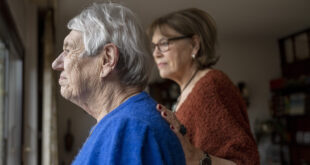 Retirement in today's world means living life to the full. And to match this new attitude, there is an extensive range of accommodation options and services specifically designed for the lifestyle you choose.
Retirement in today's world means living life to the full. And to match this new attitude, there is an extensive range of accommodation options and services specifically designed for the lifestyle you choose.
Naturally, a major factor in your lifestyle is where, and how, you live. This contributes significantly to your sense of well-being, particularly as you get older and your home becomes more central in your life.
As you think about the pros and cons of your home or what help or care you may need as you get older – there are choices to make and options to consider.
This article aims to assist you to make the best decision for yourself, or a family member, at the right time.
Staying in Your Current Home
For many people, staying in your family home is your first choice in retirement. It's a decision which offers familiarity and security and perhaps enables you to maintain interest in your garden as an important hobby.
You might also see your home as a 'refuge' for the family to come back to.
There are also financial issues to think about. Home isn't just a place in which to live – for most people, it's likely to be your biggest asset.
Downsizing Your Home
If you have a large sum of money tied up in your house, compared with your other retirement savings, an option is to sell your house and downsize to a smaller one.
If it is less expensive, the money freed up can have a significant impact on your lifestyle. Your choice to trade down might also be for lifestyle reasons – as you get older, the ongoing maintenance of a larger home and garden can simply become a burden.
Or perhaps you want to live nearer to family.
When downsizing, keep in mind the need for space to pursue your new leisure or business interests, or for grandchildren coming to stay. Moving to a retirement community can be another way of downsizing. You continue to live independently but have access to additional facilities and support systems in the future.
(See the Retirement Villages section).
Modifying Your Home
Whether you stay put or move, you may consider altering your house to accommodate your changing needs. Particularly if you have a disability, physical barriers or poor design can compromise your enjoyment of life and increase your dependency.
So, it is worth considering the many modifications, large or small, that can make life easier – from adding a ramp in place of steps to mounting a grab rail in the bathroom.
If you have a long-term physical disability and need housing modifications to live independently, you may be eligible for assistance through the Suitable Homes Service.
Moving to Rental Accommodation
Selling your house and renting is another choice you can make for financial or lifestyle reasons. The advantages are that you can release money tied up in your home, you are not responsible for maintenance, and you can shift easily.
However, there are disadvantages – you may feel less secure as the landlord may sell the house, the rent may go up, and you may not feel the same enjoyment of house and garden as you did when you were the home-owner. Subsidised rental accommodation is also available specifically for older people.
Support in your own home
Access to care is an important ingredient in the planning of your retirement lifestyle. Home-based Support, Respite Care and Day Care programmes all provide significant assistance so that people can stay in their homes as long as possible.
Home-based Support provides services in your home and can involve a wide range of assistance from medical/nursing care and personal care to household tasks such as cooking and cleaning. Respite Care is a short stay in a rest home or hospital to give a break – a respite – to people who are caring for their elderly.
Day Care programmes are often based at a rest home or hospital, and provide both activities and social interaction.
These services aim to help people with essential needs, so they can retain their independence as long as possible.
They often also provide a much higher level of well-being and safety than may exist otherwise.
View service coordination agencies which provide free information and access to Home Help, Day Care and Respite Care.
Retirement Villages
Today's retirement villages are not 'old folks' homes.
Rather, they offer a fresh lifestyle to those who want to live independently in their own home, whether they are 60 or 90.
The term 'retirement village' covers an ever-increasing variety of services. Villages range from groups of villas or townhouses, to serviced apartments, to full service communities.
Some complexes have units or villas only, while others have three levels of provision: independent housing, rest home, and hospital.
Some retirement villages even offer 'rest home level' and 'hospital level' care in the resident's own dwelling, rather than have them move out to a residential facility.
Village units and apartments are also being built with such future space requirements in mind. In the past, retirement villages have mainly attracted the 70+ age group, but the age is creeping down with new 'lifestyle' villages for over 55s.
In fact, these new-look villages are enticing even younger 'third-lifers' who may not be fully retired and are seeking a more balanced lifestyle.
Homes, in a variety of designs, will have a third bedroom for the computer and office.
And the village offers an active and social life with a business centre, gym, pool, walking tracks, cafe and restaurant on site.
For those who want more help, serviced apartment complexes have a variety of support services, and attract a wide range of people, from the frail elderly to still-working single men and women.
Abbeyfield House
A different style of retirement community is an Abbeyfield House, which has been called 'flatting for seniors'.
An Abbeyfield House aims to be 'a typical house in a typical street' with family-styled independent living for up to ten men and women, usually in their 70's, 80's and beyond, at a price that is affordable to most older people.
It fills a gap in the range of options, offering greater support and social contact than independent living units, and providing for those who do not need Rest Home care.
Residents have a comfortable suite, furnished as they wish, with ensuite facilities. They have their privacy and come and go as they please. A live-in housekeeper/cook looks after the house, shops and provides the main meals, and cares generally for the residents.
The options include:
* Remaining in your family home or moving to a more suitable house – you want to live independently, with in-home support if needed.
* Retirement communities – you want to live independently, or with assistance, within a community.
* Residential care in a rest home or hospital – you need support and care, and it is no longer appropriate for you to remain living in your own house.










Join the Discussion
Type out your comment here:
You must be logged in to post a comment.